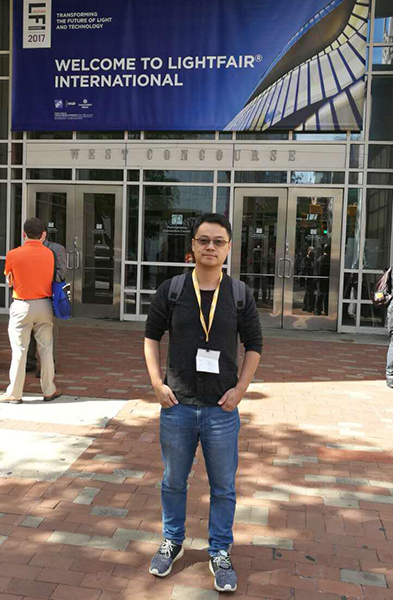LED filaments have been gaining popularity as its technology progressed. More new manufacturing equipment is introduced and the market keeps scaling up. A growing number of distributors and end-consumers show interest to want to know more about LED filament.
Ledison Optoelectronics Co., Ltd has been an undeniable shining star in the LED filament industry. Neither did it have a long history, nor did Ledison have billions of RMB revenue per year like listed companies. However, Ledison has the core LED filament patents. In order to deeply understand current LED filament market status and the company, LEDinside interviewed Kai-Yi Teng, General Manager of Shenzhen Ledison Optoelectronics.
 |
|
Kai-Yi Teng, General Manager of Shenzhen Ledison Optoelectronics (Image: LEDinside) |
Demand in Overseas Market Soars, but not much in Chinese Domestic Market
In the first half of 2017, the number of China-manufactured LED filaments exported overseas skyrocketed, according to LEDinside’s analysts.The market value of LED filament saw the most growth among all types of LED products. Teng expressed that Ledison's sales in 2017 so far has been twice the sum in the prior period.
To competing with rivals for the growing demand outside China, Chinese LED filament makers might as well make sure they are armed with essential intellectual properties to prevent legal issues. Ledison's core patents made itself influential. Teng said Ledison is one of the companies that own the most comprehensive patent portfolio that covers as wide a range as possible of LED filaments.
Just do a quick count here. Ledison manufactures and ships out at least 300 types of LED filaments. Equipped with a myriad of LED filament patents, Ledison has some truly unique advantages. Currently, its products have already been delivered to nearly all the mainstream markets in the world. From the east such as Japan and Australia, to the west as Europe and America, Ledison’s products are almost available everywhere.
By contrast, LED filament makers have a hard time in the Chinese domestic market. Teng added that currently in China the demand for filament has increased but the growth is very limited. The three features of LED filaments- stylish look, high luminous efficiency, and high CRI- don’t seem to take the hearts of buyers in China. Instead, its price makes it even more unlikely to be widely accepted among Chinese distributors.
Two Trends to Expect As the Reshuffle Begins
As the demand grows, more and more firms join the LED filament industry. This trend might soon trigger a reshuffle.
Teng explained that more and more giants entered this sector as new demand is emerging. In this way, the reshuffle in the LED filament industry would happen sooner than expected. A Large market scale does not necessarily mean good for every competitor. A massive market attracts tier-one giants, but also arouse bitter price wars. Some companies will have to exit the market.
Teng believes that, after the reshuffle, there will be two major trends. First, demand will rise significantly in the long term. At least in the next three years, the demand for filament will soar by over 50% per year. This is definitely good for every player. Next, the industrial winners will steadily dominate the sector. Factories that don’t have enough competitiveness will bottom out. Every player needs to stay alert.
Product Diversification Is the Next
As the market supply grows, the technologies underpinning that are also upgrading. In Teng’s opinion, LED filament has earned enough market reception as the completion of the first task.
From 2017, the LED filament industry needs to accomplish the second task: product diversification. In fact, in 2016, some new products already hit the market. In particular, flexible LED filaments were the most desired. In 2017, the demand stays strong, and firms have by turns been showcasing their own products in major expos.
However, according to Teng, flexible filaments generally use flip chip LEDs. Presently, flip chip LED's luminous efficiency is still not high enough. Flexible LED filaments are less likely to be mainstream in the general lighting sector. Thus, for quite a long time in the future, flexible LED filaments will still only be a supporting role, compared with regular ones.
Teng concluded that, at this stage, new technologies will be developed to advance LED filament in various aspects. The future will be full of surprises: Smart design, driver on board (DOB) structure, low-voltage operation, and glass housing improvement. Different business opportunities and potential might just occur at any time.





 CN
TW
EN
CN
TW
EN






